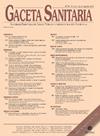La ley de eutanasia y experiencias profesionales: tensiones en la práctica clínica
IF 1.5
4区 医学
Q3 HEALTH CARE SCIENCES & SERVICES
引用次数: 0
Abstract
Objective
To analyze the process of assisted death provision in Catalonia and identify the main tensions, difficulties, and/or sources of discomfort related to professional practice.
Method
A qualitative study was conducted based on interviews (n = 29) and focus groups (n = 19) with professionals who participated in the euthanasia process. The selection of participants combined the snowball and maximization of variability procedures, taking into account the variables of professional profile, setting, gender, age and territoriality. Intentional and theoretical sampling process.
Results
The assisted death process is divided into four main moments: 1) reception of the request, 2) medical-bureaucratic procedure, 3) the actual procedure, and 4) closure. At each of these moments, difficulties arise that can be a source of discomfort and have to do with the limits and tensions between the legal and moral, the conception of one's own professional role, the lack of recognition of some professional roles, stress and overload, the lack of formal and informal support, and the relationship with the patient and his/her family. The bureaucratic-administrative stress derived from a protective law, with both prior and subsequent verifying control, stands out, given that it stresses the professionals immersed in a healthcare system already under high pressure after budget cuts and the COVID-19 epidemic.
Conclusions
Throughout the assisted death process, the sources of distress are diverse and of a psychological, psychosocial, and structural nature. These results may lead to interventions for psychological and peer support, information, training, institutional involvement, and burden reduction.
[安乐死法与专业经验:临床实践中的紧张关系]。
目的分析加泰罗尼亚地区提供协助死亡的过程,并确定与专业实践相关的主要矛盾、困难和/或不适来源:对参与安乐死过程的专业人员进行了访谈(29 人)和焦点小组(19 人),并在此基础上开展了一项定性研究。参与者的选择结合了 "滚雪球 "和 "变异性最大化 "程序,并考虑了专业概况、环境、性别、年龄和地域等变量。结果:协助死亡过程分为四个主要时刻:1) 接收请求;2) 医疗-官僚程序;3) 实际程序;4) 结束。在每一个时刻,都会出现一些困难,这些困难可能会引起不适,涉及法律与道德之间的限制和紧张关系、对自身专业角色的认识、某些专业角色得不到认可、压力和超负荷工作、缺乏正式和非正式的支持,以及与病人及其家属的关系。鉴于医疗保健系统在预算削减和 COVID-19 流行病之后已经承受了很大压力,这给身处其中的专业人员带来了压力,因此,保护性法律(包括事前和事后的核查控制)所带来的官僚行政压力尤为突出:在整个协助死亡过程中,痛苦的来源是多种多样的,具有心理、社会心理和结构性质。这些结果可能会导致心理和同伴支持、信息、培训、机构参与和减轻负担等方面的干预措施。
本文章由计算机程序翻译,如有差异,请以英文原文为准。
求助全文
约1分钟内获得全文
求助全文
来源期刊

Gaceta Sanitaria
医学-公共卫生、环境卫生与职业卫生
CiteScore
4.10
自引率
5.30%
发文量
80
审稿时长
29 days
期刊介绍:
Gaceta Sanitaria (Health Gazette) is an international journal that accepts articles in Spanish and in English. It is the official scientific journal of the Sociedad Española de Salud Publica y Administración Sanitaria (Spanish Society of Public Health and Health Administration) (SESPAS).
The Journal publishes 6 issues per year on different areas of Public Health and Health Administration, including:
-Applied epidemiology-
Health prevention and promotion-
Environmental health-
International health-
Management and assessment of policies and services-
Health technology assessments-
Health economics.
The editorial process is regulated by a peer review system. It publishes original works, reviews, opinion articles, field and methodology notes, protocols, letters to the editor, editorials, and debates.
 求助内容:
求助内容: 应助结果提醒方式:
应助结果提醒方式:


